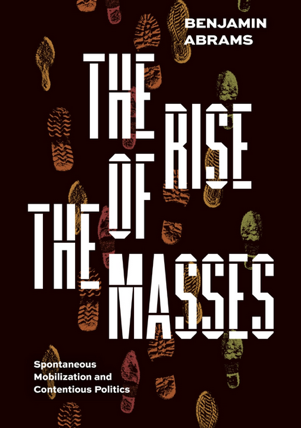The Rise of the Masses
Breve Descripción
Un examen perspicaz de cómo las motivaciones individuales y las estructuras sociales que se entrecruzan movilizan protestas masivas espontáneas. Al analizar una variedad de casos históricos y regionales que brindan información sobre el comportamiento colectivo de masas, Abrams se basa en entrevistas en primera persona y fuentes de archivo para argumentar que las personas se movilizan orgánicamente cuando un movimiento habla de sus disposiciones preexistentes y cuando las condiciones estructurales y sociales les hacen más fácil involucrarse, lo que Abrams llama teoría de la afinidad-convergencia.
Breve descrição
Um exame perspicaz de como motivações individuais e estruturas sociais que se cruzam mobilizam protestos em massa espontâneos. Analisando uma variedade de casos históricos e regionais que fornecem informações sobre o comportamento coletivo de massa, Abrams se baseia em entrevistas em primeira pessoa e fontes de arquivo para argumentar que as pessoas se mobilizam organicamente quando um movimento fala de suas disposições pré-existentes e quando as condições estruturais e sociais tornam é mais fácil para eles se envolverem, o que Abrams chama de teoria da afinidade-convergência.
Full description
Between 15 and 26 million Americans participated in protests surrounding the murders of George Floyd, Ahmaud Arbery, Breonna Taylor, and others as part of the Black Lives Matter protests in 2020, which is only one of the most recent examples of an immense mobilization of citizens around a cause. In The Rise of the Masses, sociologist Benjamin Abrams addresses why and how people spontaneously protest, riot, and revolt en masse. While most uprisings of such a scale require tremendous resources and organizing, this book focuses on cases where people with no connection to organized movements take to the streets, largely of their own accord. Looking to the Arab Spring, Occupy Wall Street, and the Black Lives Uprising, as well as the historical case of the French Revolution, Abrams lays out a theory of how and why massive mobilizations arise without the large-scale planning that usually goes into staging protests.
Analyzing a breadth of historical and regional cases that provide insight into mass collective behavior, Abrams draws on first-person interviews and archival sources to argue that people organically mobilize when a movement speaks to their pre-existing dispositions and when structural and social conditions make it easier to get involved—what Abrams terms affinity-convergence theory. Shedding a light on the drivers behind large spontaneous protests, The Rise of the Masses offers a significant theory that could help predict movements to come.
Social science
otras áreas de / interés...
other areas of / interest...
outras áreas de interesse...
¿Buscas un título en un área específica?
¿Buscas un título en un área específica?
¿Buscas un título en un área específica?














